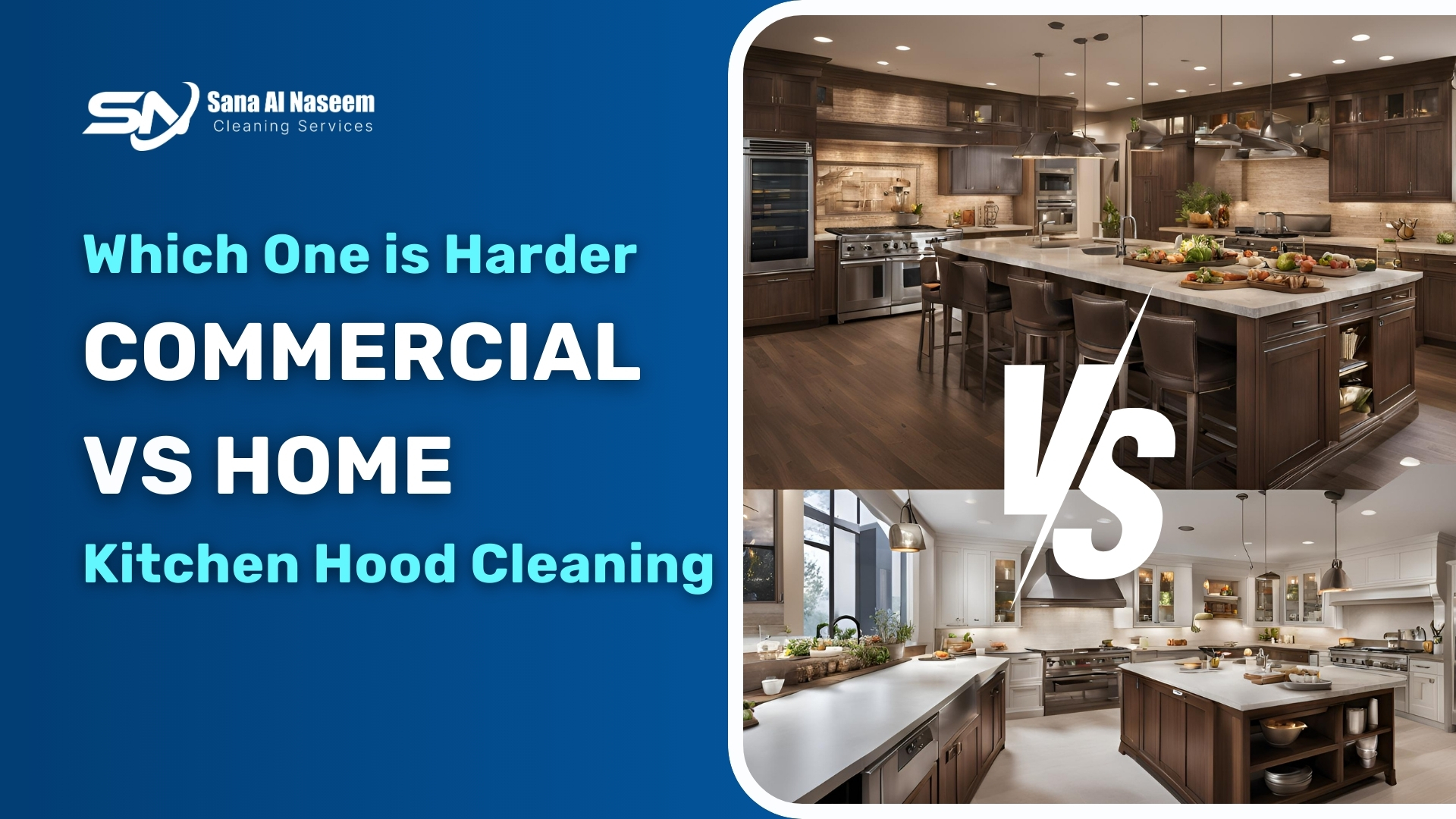Did you know that neglecting to clean your kitchen hood can lead to serious fire hazards? Whether in a bustling commercial cleaning kitchen or a cozy home kitchen, hood cleaning is essential for safety and efficiency. But how do commercial and home kitchen hood cleaning differ? This blog will explore the complexities of both processes, helping you understand which one is harder and why regular maintenance is crucial.
Understanding Kitchen Hoods
Kitchen hoods, also known as exhaust hoods, play a vital role in maintaining air quality by removing smoke, steam, and grease particles produced during cooking. However, over time, these hoods can accumulate significant amounts of grease and grime, leading to potential fire hazards and decreased efficiency.
Importance of Kitchen Hood Cleaning
Regular cleaning of kitchen hoods is essential for several reasons:
- Fire Safety: Grease buildup can ignite and cause fires, especially in commercial kitchens where cooking occurs frequently.
- Air Quality: A clean hood improves ventilation, ensuring that smoke and odors are effectively removed from the kitchen.
- Compliance: Commercial kitchens must adhere to safety regulations like NFPA 96, which mandates regular cleaning to prevent fire hazards.
Commercial Kitchen Hood Cleaning
Process Complexity
Cleaning a commercial kitchen hood cleaning involves a more complex process due to the scale and frequency of use. Professional services typically follow these steps:
- Initial Inspection: Technicians assess the condition of the hood and surrounding areas.
- Degreasing: High-powered degreasers are used to remove heavy grease deposits from the hood, filters, and ducts.
- Deep Cleaning: Every component, including the fan blades and grease traps, is cleaned thoroughly to ensure optimal performance.
- Final Inspection: After cleaning, a final inspection ensures everything is reassembled correctly and functioning well.
Frequency of Cleaning
Commercial kitchens often require more frequent cleaning compared to home kitchens. Depending on usage:
- Monthly: For high-volume operations (e.g., restaurants).
- Quarterly/Semi-Annually: For moderate-volume operations (e.g., catering services).
This rigorous schedule helps mitigate fire risks and maintain air quality standards.
Home Kitchen Hood Cleaning
Simplicity of Process
Cleaning a home kitchen hood is generally less complex but still important. The process typically includes:
- Surface Wipe Down: Regularly wiping down the exterior surfaces with a degreaser or vinegar solution prevents buildup.
- Filter Cleaning: Homeowners should remove filters monthly for scrubbing or dishwasher cleaning.
- Deep Cleaning: A thorough cleaning every few months involves disassembling parts of the hood for deeper access.
Recommended Frequency
For home kitchens:
- Monthly: Light cleaning of surfaces and filters.
- Every 3-6 Months: Deep cleaning to prevent significant buildup.
Commercial vs Home Kitchen Hood Cleaning
| Aspect | Commercial Kitchen Hood Cleaning | Home Kitchen Hood Cleaning |
|---|---|---|
| Complexity | High | Moderate |
| Frequency | Monthly to Quarterly | Monthly to Biannually |
| Professional Help | Often required | Usually DIY |
| Fire Hazard Risk | Higher due to frequent use | Lower but still present |
Conclusion
In conclusion, while both commercial and home kitchen hood cleaning are essential for safety and efficiency, commercial kitchen hood cleaning is generally more complex and frequent due to higher usage levels. Regular maintenance not only reduces fire risks but also enhances air quality in both settings.
By understanding the differences between these two types of kitchen hood cleaning, you can better appreciate the importance of maintaining a clean cooking environment. Whether you operate a bustling restaurant or enjoy cooking at home, keeping your kitchen hood clean should be a top priority!

